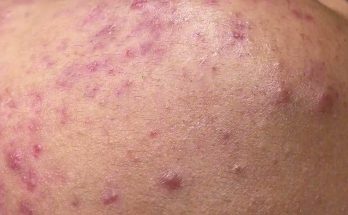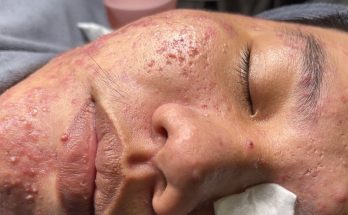What Is a Boil?
Common Boil Locations
Boils can affect any area of your body. They’re most likely to form in places where skin rubs against skin or you sweat.
Most often, the bacteria Staphylococcus aureus (staph) causes boils. But other types of bacteria or fungi on your skin can also cause them. You may get a boil just once, every once in a while, or often.
Here are some places they can appear:
Boils on inner thighs
The thighs are a common place to find boils. These growths form when your thighs rub against each other or get sweaty.
Vaginal boils
Boils can affect the skin folds of the groin, the pubic area, and the lips and folds of the vagina. This area has lots of hair follicles and can be prone to chafing, especially if you wear tight-fitting clothes. You can also develop a boil after you get a cut or ingrown hair from shaving this area.
Boils on butt
Boils often affect the buttocks because of hair follicles, sweat, and friction in the area. Wearing dirty underwear could make a boil more likely to form here.
Boils on gums
Periodontal abscess is the name for boils on the gums. It’s a collection of pus that looks like a boil or pimple on your gum. Gum disease causes most boils on the gums. You can get a boil there if you don’t brush your teeth well and bacteria get into the space between your teeth and gums.
Boils on the face
Boils on your face are different from cysts and pimples, though they can look similar. Cysts are filled with fluid, while a pimple is the result of a clogged pore. Cysts and pimples aren’t contagious like boils can be.
Boils under armpit
The armpit is another likely place for boils to form. It’s an area that gets sweaty and where skin rubs against skin. Shaving and friction from tight clothes can also cause boils to form in the armpit.
Other common boil locations
- Breasts
- Neck
- Shoulders
- Back
- Legs
Keep an eye out for several boils that appear in a group. That’s a more serious type of infection called a carbuncle.
Causes of Boils
Staph bacteria cause most boils. This germ enters your body through tiny nicks or cuts in your skin, or it can travel down a hair to the follicle.
These things increase the risk for boils and other skin infections:
- Diabetes, which can make it harder for your body to fight infections
- A weak immune system, from other illnesses
- Other skin conditions like acne or eczema that break your skin’s protective barrier
- Close contact with someone who has a staph infection
- Obesity
Are boils contagious?
Yes. Staph bacteria that cause boils can spread from person to person. You can develop a boil from skin-to-skin contact or if you share personal items like towels or razors with someone who has a staph infection.
Why do I keep getting boils all over my body?
Most boils heal and go away in a couple of weeks. Boils that keep coming back could be a sign that you’re a carrier – meaning that staph bacteria live on your skin. They can also be a sign of uncontrolled diabetes.
Sometimes repeated boils are from a methicillin-resistant Staphylococcus aureus (MRSA) infection. MRSA can lead to a serious blood infection called sepsis, or a swelling of the brain and spinal cord, called meningitis. See a doctor if boils keep coming back.
Symptoms of Boils
A boil starts as a hard, painful bump about the size of a pea. The bump and the skin around the bump may be red, purple, or flesh colored. Over the next few days, the lump becomes softer, larger, and more painful. Soon a pocket of pus forms on the top of the boil. The boil eventually breaks open and the pus drains out.
Boils vs. pimples
Clogged oil glands in the skin cause pimples. Staph bacteria infections cause boils. That’s why you might notice boils around scratches or cuts. Pimples aren’t contagious, but boils can be. A boil will likely grow faster than a pimple and hurt more. And it won’t get better when you use pimple treatments.
Boils vs. cysts
A cyst is a fluid-filled pocket in the skin that can form from a blocked duct or after an injury. It doesn’t hurt and it’s usually harmless. Cysts grow more slowly than boils. They contain fluid but not whitish-yellow pus, which is a sign of infection. Cysts aren’t contagious, but you can spread boils to other people.
How long do boils last?
Usually boils heal in 2 to 3 weeks. A boil can leave a scar, especially if your doctor drained it. Boils that last longer or keep coming back could be a sign of a chronic condition or a more severe infection.
When to Seek Medical Care
Boils usually don’t require medical attention. But if you’re in poor health and develop high fever and chills along with the boil, go to the emergency room.
Call your doctor if your boil doesn’t go away after 2 weeks or or you have:
- Fever
- Swollen lymph nodes
- Red or red streaks around the boil
- Boils on your face or spine
- Serious pain
- Multiple boils
- Vision issues
- Boils that keep coming back
Exams and Tests for Boils
Your doctor may be able to diagnose a boil just by looking at it. They may take a small sample of pus from the boil and send it to a lab to find out which bacteria caused it. Knowing whether staph or other types of bacteria are in the boil can help your doctor choose the right antibiotic to treat it.
Boil Self-Care
You may be able to treat boils at home. But whatever you do, don’t pick at the boil or try to pop it yourself. The boil may drain on its own, which is important in the healing process.
Some ways to treat a boil include:
Apply warm compresses. Soak a washcloth in warm water and then press it gently against the boil for about 10 minutes. You can repeat this a few times throughout the day. Once you see the pus at the center (that’s called “bringing a boil to a head”), it’ll probably burst and drain soon. This usually happens within 10 days after you see the head.
Use a cover or bandage. To help the boil heal faster, keep it covered. After you wash the boil and the area around it, apply a clean dressing to keep it protected. You can use a bandage or gauze.
Practice good hygiene. After touching the boil or surrounding area, thoroughly wash your hands to prevent spreading the infection to other parts of your body — or passing it to another person. Take a bath or a shower daily to keep your skin clean and prevent the spread of infection to others. Avoid public swimming pools and gyms until your boil has cleared up.
Wash your linens. To lower the risk of further infection, wash your bedding, clothing, and towels at least once a week at a high temperature to kill bacteria. Don’t share your towels with anyone else while you have a boil.
Take a pain reducer. If your boil is painful, take a pain reliever like acetaminophen or ibuprofen. These can also lower your fever if your boil is causing one.
Medical Treatment for Boils
Your doctor may take a sample called a culture from the boil to find out what bacteria caused the infection. The test can help your doctor know which antibiotics will work best against the bacteria.
Boil treatment over-the-counter
An over-the-counter pain reliever like acetaminophen or ibuprofen can relieve discomfort from the boil. Cover the boil with a clean bandage or gauze while it heals. Over-the-counter antibiotic ointments like Bacitracin, Neosporin, or Polysporin won’t work because these medicines can’t get deep enough into the skin to treat the infection.
Best antibiotic for boils
Your doctor might prescribe an antibiotic if you have a high temperature, the boil is on your face, or it’s very painful. Prescription antibiotic creams like clindamycin or mupirocin may be an option if you only have a few boils.
Prescription antibiotics are for boils that come with a fever or swollen lymph nodes, or if you have a more severe infection called cellulitis. The first choice of antibiotic may be dicloxacillin or a cephalosporin.
Staph bacteria have become resistant to many antibiotics. Resistance means the antibiotics no longer work against these bacteria. Your doctor might have to try more than one antibiotic to find one that kills the kind of bacteria that caused your boil.
Other antibiotics that treat staph infections include:
- Amoxicillin (Amoxil, others)
- Azithromycin (Zithromax)
- Cephalexin (Keflex)
- Clarithromycin (Biaxin)
- Clindamycin (Cleocin)
- Linezolid (Zyvox)
- Tetracycline (Achromycin V)
- Trimethoprim‐sulfamethoxazole


